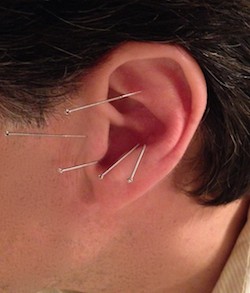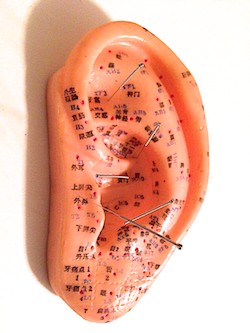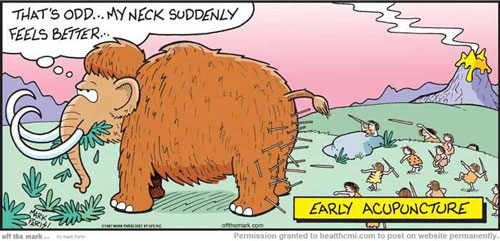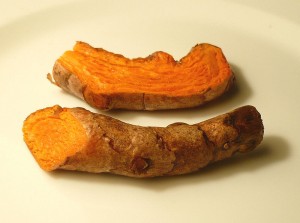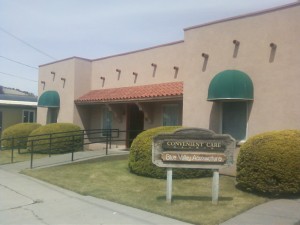Researchers have discovered how to measure and validate the existence of acupuncture points and their meridians. MRI studies and oxygen sensor studies come from some of the most prestigious universities in the world. Today, I want to start with remarkable research from investigators at one of the most prestigious universities in Korea.
Sungkyunkwan University (Seoul) was founded in 1398. Yes, over 600 years ago! It was recently acquired by the Samsung Group in 1996, which has helped preserve its legacy of excellence with substantial financial support. The university is a leader in many fields including nanotechnology and natural sciences, features a dual degree program with Ohio State University and has a collaborative program with the MIT (Massachusetts Institute of Technology) Sloan School of Management.
Two researchers from Sungkunkwan Univeristy worked with another researcher from the Department of Chemistry and Nano Science at Ewha Womans University on this ground breaking research. Notably, Ewha Womans University is considered one of the most prestigious schools in Korea and produced Korea’s first female doctor, lawyer, justice on the Constitutional Court and the first female prime minister of Korea.
Why all the fuss about researchers and the schools they hail from? In the many years I have worked in Chinese and Oriental Medicine, I have uniformly come across skepticism and resistance to valuable, peer reviewed research. I want to give a little background before going forward with something as important as this research. For some it seems, no research institute or study is sufficient so long as it says something positive about acupuncture and herbal medicine. Ethnocentrism abound, I wanted to stave off imperious pans decrying putative proofs and to assuage presumptive skepticism and concomitant guetapens. Perhaps establishing the authenticity and seriousness of the institutions from which the research emanates helps equanimity to mollify incredulity and for rapprochement to exist between the skeptic and modern scientists whose works demonstrate the existence of acupuncture points and their functions.
The research from Sungkyunkwan University and Ewha Woman University is entitled Heterogeneity of Skin Surface Oxygen Level of Wrist in Relation to Acupuncture Point.[1] The study used an amperometric oxygen microsensor to detect partial oxygen pressure variations at different locations on the anterior aspect of the left wrist. The researchers concluded that partial oxygen pressure is significantly higher at acupuncture points.
Below are two images from the study measuring the increase of partial oxygen pressure combined with an overlay of the local acupuncture point locations. The images are representative of typical readings found in the study and remarkably map the Lung Hand Taiyin, Pericardium Hand Jueyin and Heart Shaoyin channels and their associated local points. Depicted are P7 and P6 clearly showing high oxygen pressure levels. The same is true for LU9, LU8, HT7, HT6, HT5 and HT4. Note that non-acupuncture point regions do not show higher oxygen pressure levels. These measurements are not needled points but are natural resting states of acupuncture points absent stimulation. This biomedical research gives us insight into the structural makeup of acupuncture points. This type of basic research is not isolated and numerous studies from multitudes of the top research centers and universities demonstrate specific properties and physiological actions of acupuncture points.
Wrist acupuncture points including the Peridcardium channel and Lung channel.
Oxygen Pressure at Acupuncture Points
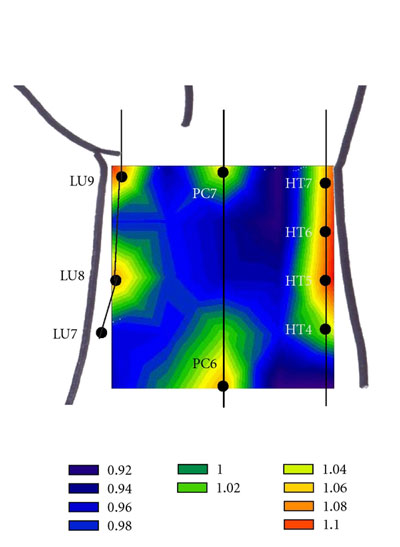
Wrist acupuncture points another image.
Another Acupuncture Oxygen Pressure Sample
– See more at: http://www.healthcmi.com/Acupuncture-Blog/758-acupointgb40#sthash.RUU7LZZz.dpuf
The nexus of most research on the physical existence of acupuncture points and acupuncture meridians is hemodynamic, MRI, oxygen pressure, histological, physiological, clinical and electroconductivity research. Researchers at the University of California School of Medicine (Irvine, California) noted, “Recent evidence shows that stimulation of different points on the body causes distinct responses in hemodynamic, fMRI and central neural electrophysiological responses.” The investigators reviewed MRI results and noted that “stimulation of different sets of acupoints leads to disease-specific neuronal responses, even when acupoints are located within the same spinal segment.” This summarizes research in the vanguard of technical documentation on acupuncture.[2][3]
University of California researchers Choi, Jiang and Longhurst note of acupuncture, “hemodynamic, functional magnetic resonance imaging and neurophysiological studies evaluating the responses to stimulation of multiple points on the body surface have shown that point-specific actions are present.”[4] Naturally, they are running into the difficulty of AhShi points and their specific actions. Perhaps they will discover new effective actions for AhShi points as a result of basic research. Other research shows point specificity in brain physiology and reflects the overall direction of scientific investigation in the field of acupuncture.
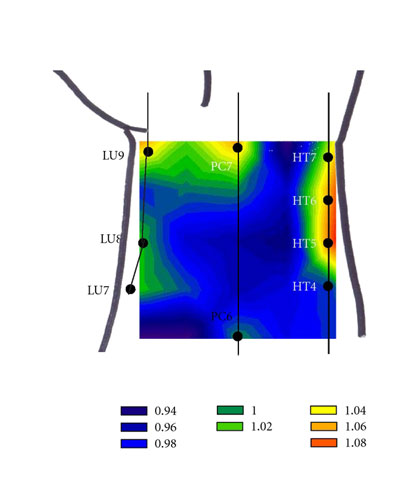
The Journal of Magnetic Resonance Imaging featured research on the neurophysiological effects of acupuncture points using MRI imaging noting that acupoint GB40 stimulation enhanced “connectivity between the superior temporal gyrus (STG) and anterior insula.” The investigators concluded, “The current study demonstrates that acupuncture at different acupoints could exert different modulatory effects on RSNs. Our findings may help to understand the neurophysiological mechanisms underlying acupuncture specificity.”[5] Here, the researchers have validated acupuncture point specificity and suggest a possible physiological model of understanding acupuncture points.
HRV (Heart Rate Variability) is a measure of cardiovascular health. One study notes that, “HRV changes significantly during auricular acupuncture….” This research also notes that, “HRV total increases during auricular acupuncture….”[6] Another related study from the International Society for Autonomic Neuroscience notes that acupuncture “causes the modulation of cardiac autonomic function.” These are but two examples of investigations citing specific medicinal actions of specific acupuncture points and is in no way exhaustive of the vast body of research demonstrating acupuncture point specificity for the treatment of hypertension, atrial fibrillation and other cardiovascular disorders.[7] Investigators from the University of California (Los Angeles and Irvine) “have shown that electroacupuncture stimulation activates neurons” in specific brain regions thereby reducing hypertension.[8]
Dr. Berman, M.D. served as a lead researcher in a University of Maryland School of Medicine investigation published in the prestigious Annals of Internal Medicine. The research concludes that, “Acupuncture seems to provide improvement in function and pain relief as an adjunctive therapy for osteoarthritis of the knee when compared with credible sham acupuncture and education control groups.”[9] What is interesting in this clinical trial is that it was an early study showing that sham acupuncture was not as effective as verum acupuncture. The study sought to isolate and address the placebo effect and found that it is not responsible for the medical benefits associated with acupuncture therapy. There are many papers showing the specific medical benefits of acupuncture on internal organs, tissues and towards the resolution of specific ailments. I thought I would highlight this investigation given its historical value.
Einstein’s Theory of Relativity initially did not catch on and was ridiculed before acceptance. The same is true for much of medicine both old and new. People’s presuppositions often circumvent equanimity and receptiveness to new insights. Backing up a bit, one might have thought that a basic neurologic test for the Babinski Sign was pure fiction. It may have seemed logical and self-evident that rubbing someone’s foot and looking for dorsiflexion of the great toe and fanning of the other toes could not possibly indicate brain or spinal cord damage. Yet, the great French neurologist of Polish origin, Babinski, discovered that this plantar reflex identifies central nervous system damage, which is now an accepted medical reality by medical doctors and is an effective diagnostic tool for central nervous system damage.
Acupuncturists and herbalists have faced acrimonious traducements and caluminiations towards substantiated supportive research. Often there is a predilection towards rejecting the efficacy of Chinese and Oriental Medicine that trumps the realities of hard evidence and smacks of ethnocentrism. The Flat Earth Society felt the same way about the infidels suggesting that the earth is round. Galileo had his fair share of troubles too. It cannot be underestimated how high the stakes really are for patient care and beneficial patient outcomes. At risk is non-integration of cost-effective medicine that roots out the source of suffering by healing illness. A time honored traditional clinical medicine history combined with supportive modern research data suggests that acupuncture is an effective modality of therapeutic care. Acupuncture seems impossible? Recall the words of Mark Twain, “Fiction is obliged to stick to possibilities. Truth isn’t.”
It may appear to some that it is self-evident and logical that acupuncture points exist only as part of some sort of chimerical hermeneutic system. However, extensive research has already been conducted at major universities worldwide demonstrating not only that acupuncture points and meridians exist but also how they physiologically function. There is a resistance to an enormous body of research. Cloaked in veil of mature skepticism and realism, naysayers grasp at piecemeal attack pieces to fight off what has already been measured, documented and peer reviewed both in individual studies and large scale meta-analyses. I suggest an era of open-mindedness towards the modern research documenting the efficacy of Chinese and Oriental medicine, acupuncture and herbal medicine.
Footnotes:
[1] Minyoung Hong, Sarah S. Park, Yejin Ha, et al., “Heterogeneity of Skin Surface Oxygen Level of Wrist in Relation to Acupuncture Point,” Evidence-Based Complementary and Alternative Medicine, vol. 2012, Article ID 106762, 7 pages, 2012. doi:10.1155/2012/10a6762.
[2] Point specificity in acupuncture. Chin Med. 2012 Feb 28;7:4. doi: 10.1186/1749-8546-7-4. Choi EM, Jiang F, Longhurst JC.
[3] Susan Samueli Center for Integrative Medicine, Department of Medicine, School of Medicine, University of California, Irvine CA 92697-4075, USA.
[4] Point specificity in acupuncture. Chin Med. 2012 Feb 28;7:4. doi: 10.1186/1749-8546-7-4. Choi EM, Jiang F, Longhurst JC.
[5] Zhong, C., Bai, L., Dai, R., Xue, T., Wang, H., Feng, Y., Liu, Z., You, Y., Chen, S. and Tian, J. (2011), Modulatory effects of acupuncture on resting-state networks: A functional MRI study combining independent component analysis and multivariate granger causality analysis. Journal of Magnetic Resonance Imaging.
[6] Evidence-Based Complementary and Alternative Medicine. Volume 2012 (2012), Article ID 817378, 7 pages. doi:10.1155/2012/817378. Sino-European Transcontinental Basic and Clinical High-Tech Acupuncture Studies—Part 1: Auricular Acupuncture Increases Heart Rate Variability in Anesthetized Rats. Xin-Yan Gao, Kun Liu, Bing Zhu and Gerhard Litscher.
[7] Kurono Y, Minagawa M, Ishigami T, Yamada A, Kakamu T, Hayano J. Auton Neurosci. Acupuncture to Danzhong but not to Zhongting increases the cardiac vagal component of heart rate variability. 2011 Apr 26;161(1-2):116-20. Epub 2011 Jan 7.
[8] Evidence-Based Complementary and Alternative Medicine. Volume 2012 (2012), Article ID 878673, 9 pages. doi:10.1155/2012/878673. Neuroendocrine Mechanisms of Acupuncture in the Treatment of Hypertension. Wei Zhou and John C. Longhurst. Department of Anesthesiology, David Geffen School of Medicine, University of California Los Angeles, Los Angeles, CA. Department of Medicine, University of California Irvine, Irvine, CA.
[9] Ann Intern Med, Berman, Lixing, Lagenberg, Lee, Gilpin, Hochberg. 2004; 141:901-910.
– See more at: http://www.healthcmi.com/Acupuncture-Blog/758-acupointgb40#sthash.RUU7LZZz.dpuf
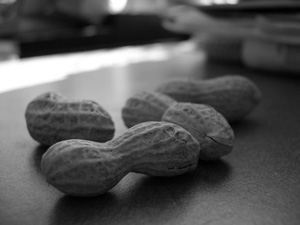 Food allergies shouldn’t prevent you from dining out with your friends and family. Unfortunately, though, many people with food allergies resort to cooking their own meals to reduce the risk of an adverse reaction. From dairy and nuts to gluten (wheat-based protein) and shellfish, there are certain foods that people must avoid to prevent adverse reactions. continue reading
Food allergies shouldn’t prevent you from dining out with your friends and family. Unfortunately, though, many people with food allergies resort to cooking their own meals to reduce the risk of an adverse reaction. From dairy and nuts to gluten (wheat-based protein) and shellfish, there are certain foods that people must avoid to prevent adverse reactions. continue reading 
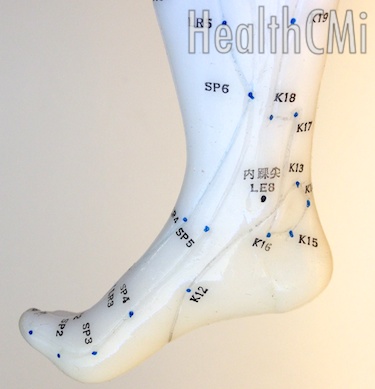
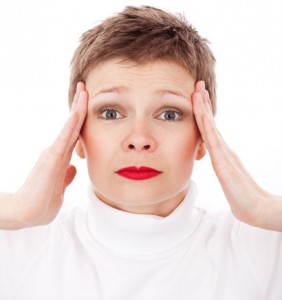 Stress from day-to-day life can have an extremely negative impact on our health, emotionally, mentally, and physically as well. Long-term or extreme stress can result in frequent or chronic headaches, muscle aches, sleeplessness, anxiety, fatigue, depression, etc. All of these problems only present even more problems to our health and overall well-being. How can we prevent stress from our everyday lives from becoming a much larger problem in our lives?
Stress from day-to-day life can have an extremely negative impact on our health, emotionally, mentally, and physically as well. Long-term or extreme stress can result in frequent or chronic headaches, muscle aches, sleeplessness, anxiety, fatigue, depression, etc. All of these problems only present even more problems to our health and overall well-being. How can we prevent stress from our everyday lives from becoming a much larger problem in our lives?


 Blue Valley Acupuncture Clinic-Dayton, WA.-Serving Walla Walla area
Blue Valley Acupuncture Clinic-Dayton, WA.-Serving Walla Walla area